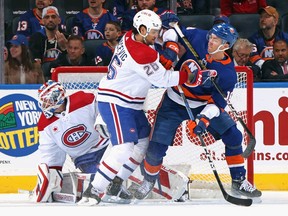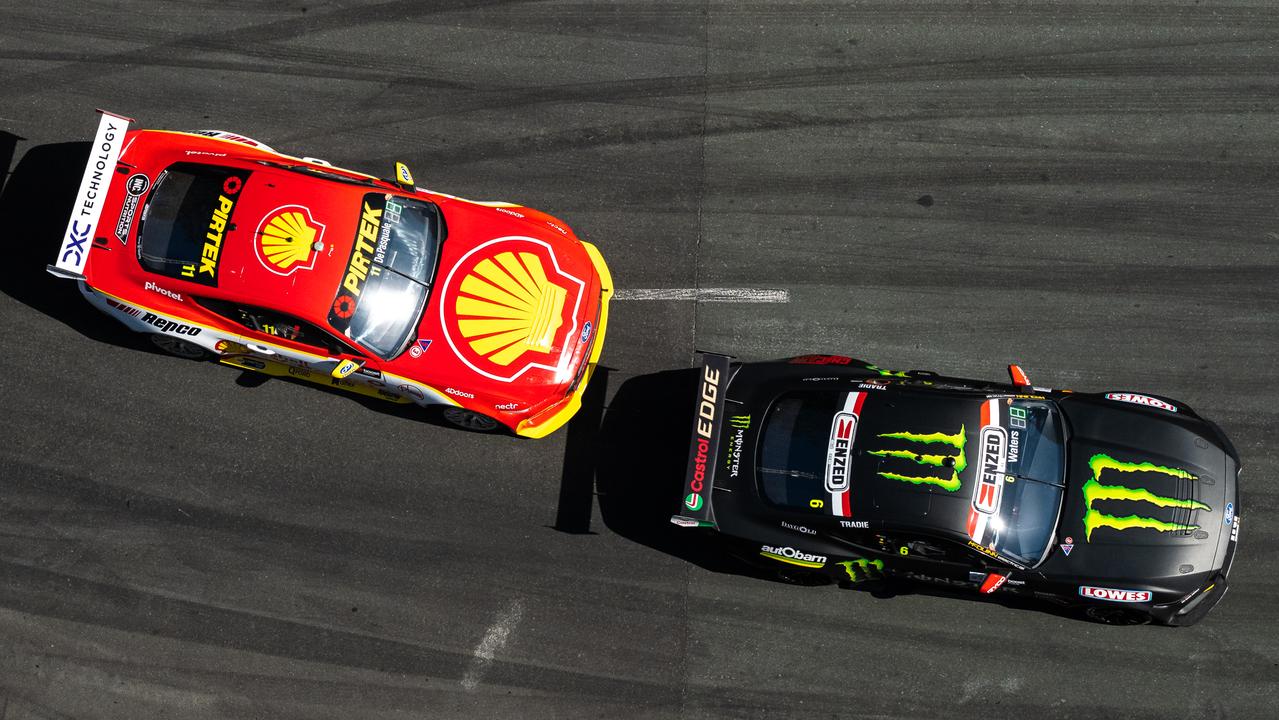Two breakthrough Ford victories at the Gold Coast provided seemingly emphatic evidence that the sport’s latest round of parity changes is doing the job.
Parity has been one of the season’s biggest narratives, with Ford teams unconvinced that the Gen3 Mustang can match the Chevrolet Camaro in a straight fight.
With so much of both cars now effectively bought off the shelf under the regulations introduced this season, the five Ford-backed squads feel they’ve been hamstrung in this year’s championship, resulting in an all-General Motors title battle.
Watch every practice, qualifying and race of the 2023 Repco Supercars Championship live and ad-break free during racing on Kayo. Join now and start streaming instantly >
Before the Gold Coast weekend Ford had won only one race on the road: Anton de Pasquale’s Sunday victory in Townsville. While the Dick Johnson Racing driver executed a fine race, he was aided by a superior tyre allocation thanks to difficult qualifying run.
Cameron Waters had the season’s only other win, albeit only after the disqualification of the rampaging Triple Eight teammates at the season-opening race in Newcastle.
Pole positions? There had been a few — five, to be exact, or just over 20 per cent of the season’s qualifying results before Gold Coast.
The matter has come to a head twice: after the Camaro teams dominated the Darwin Triple Crown with a top-nine lockout on Sunday afternoon, and again after Bathurst, where Brodie Kostecki was more than half a second faster than the quickest Mustang driver in the top-10 shootout.
The post-Bathurst aerodynamic changes, which were in action on the Gold Coast, were more wide-ranging and developed by Ford itself. While Detroit said the six tweaks would make a meaningful difference, the brand insisted its teams would remain at a disadvantage until changes are made to the engine too.
But the Gold Coast weekend went forward all the same and delivered the closest set of results for the year.
Waters took pole on Saturday and held off a charging Shane van Gisbergen at the chequered flag by just 0.2 seconds.
Brodie Kostecki started from top spot on Sunday but was overhauled in a fraught battle with David Reynolds on Sunday.
Both top-10 shootouts featured five cars apiece from each manufacturer, and across the two 250-kilometre races each marque collected 10 top-10 finishes.
Reynolds wins first race in five years | 01:37
Split poles. A pair of Ford victories. Four Ford podiums from a possible six.
Is parity solved?
“I think it’s the best race car we’ve had all year,” Waters said after victory on Saturday evening. “Just because we’ve moved the aero balance rearward to close what the Camaro has — it’s definitely helped our tyre life.
“I think it’s definitely better. Moving the aero rearward is kind of what we’ve struggled with all year, and it’s helped it a bit.
“It’s the first time I’ve been able to genuinely race for a win all year.”
Reynolds expressed similar sentiments on Sunday night after collecting his first win since 2018.
“We found a nice set-up window to play in, and that’s been really good the last couple of rounds, but obviously there’s been a parity adjustment to the Ford, which actually gave us the opportunity this weekend to perform on an equal playing field — similar equal playing field,” he said. “Probably without that I wouldn’t be sitting here. Thanks to the category for doing that.”
Certainly the qualifying numbers suggest an improvement — albeit on the evidence of just one post-parity round.
Before Gold Coast the fastest Camaro had a 0.151-second average qualifying advantage over the quickest Mustang.
The balance of power flipped at the weekend, with the Blue Oval taking a slender 0.033-second advantage.
Again, it’s based on only one circuit, but the Mustang had the upper hand in qualifying at just one round all year before this. It could be a significant indicator.
But it’s not quite job done.
PIT TALK PODCAST: Daniel Ricciardo‘s breakthrough weekend for AlphaTauri couldn’t have come at a worse time for Sergio Pérez, who binned his car on the first lap of his home race. Will this be the moment that convinced Red Bull Racing to take back the Aussie, and what would that mean for Red Bull’s broader F1 program?
THERE’S A CATCH
While the two cars certainly looked closed on the Gold Coast, they’ve looked closer on street circuits all season anyway.
Separating out just street tracks, the Camaro’s qualifying advantage was just 0.040 seconds before the Gold Coast.
With Ford and Chevrolet splitting pole honours in Surfers Paradise, that margin shrank to a barely perceptible 0.024 seconds.
That compares to the average 0.2-second gap between the gaps at permanent circuits, a massive disparity.
Street circuits make particular demands on a car. Set-up and driver confidence can contribute more to lap time than pure car performance, and that’s especially the case somewhere like Gold Coast, where so much time is made up vaulting over the kerbs and running close to the barriers.
It’s therefore difficult so separate the work of the parity package from the work of the drivers, who have now had close to a season to understand their cars and maximise their potential.
“To be honest, it’s not really a track for that,” Reynolds said of Surfers Paradise’s use a test bench. “I think it’s a positive step for us, but you can’t fix it round to round. You’ve got to look at a few different circumstances I think.”
Waters said he was certain a gap remained between the two marques.
“There are definitely still areas that I don’t think are the same,” he said. “We’ll just keep chipping away at that I guess.”
Tickford manager Matt Roberts said his team would have more to say at the next round in Adelaide, before the sport launches into a busy off-season of overseas testing.
“We’ve still got some work to do,” he said. “We’ve had one round with the changes that we’ve got. We’ll go back and do some homework.”
Hamilton bamboozled by Perez crash | 00:54
WHAT’S NEXT?
While the Supercars has made changes it thinks are fair to create a spectacle for the final two rounds of the season, the series admitted before the Gold Coast that more needs to be done to ensure the two cars are as close to equal as possible for 2024.
At the end of the year Supercars will send one of each car to the United States for full-scale wind tunnel testing. It’s a marked step up from its reliance on the vehicle control aerodynamic testing (VCAT) program used up to this point, which comprised running each car in a straight line down a runway to gather performance data.
Both motors will also be subjected to transient dynamometer testing in Melbourne in November, and the sport has bought torque sensors to correlate real-world data with the dyno results.
Supercars will also restructure its technical department to create the new roles of technical category director and senior data engineer.
It forms a robust testing program that should see the sport start the 2024 season in a much healthier place — though too late for the Ford stars who were targeting the championship this season only to see the battle boil down to an all-GM fight.
“I’m pretty disappointed really,” Waters said. “We’ve just wasted a whole year.
“It’s just highlighted how bad we paritised the car — I think it’s just exposed that.
“That’s no-one’s fault. I look at things positively, and sending cars to wind tunnels and changing how we do things is the right way to move forward.
“It’s annoying. I’ve wasted a year for sure. It’s bad for my sponsors, myself, my team, Ford. But everyone keeps trying. We’re not giving up. We just want it fixed so we’ve got a fair fight.”







